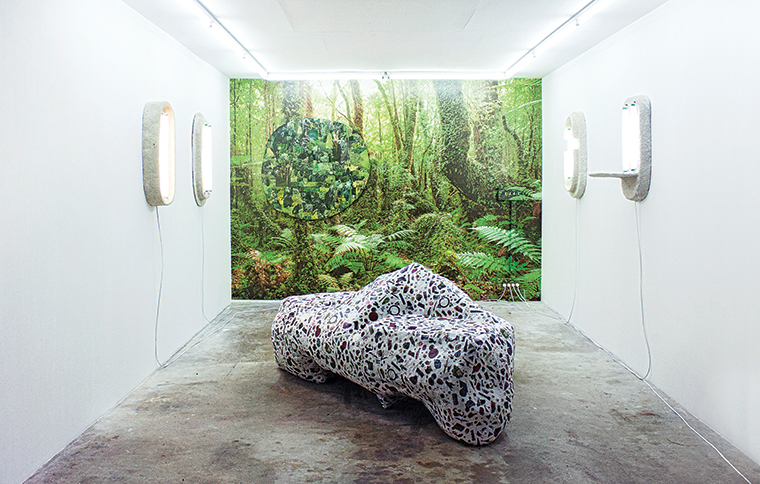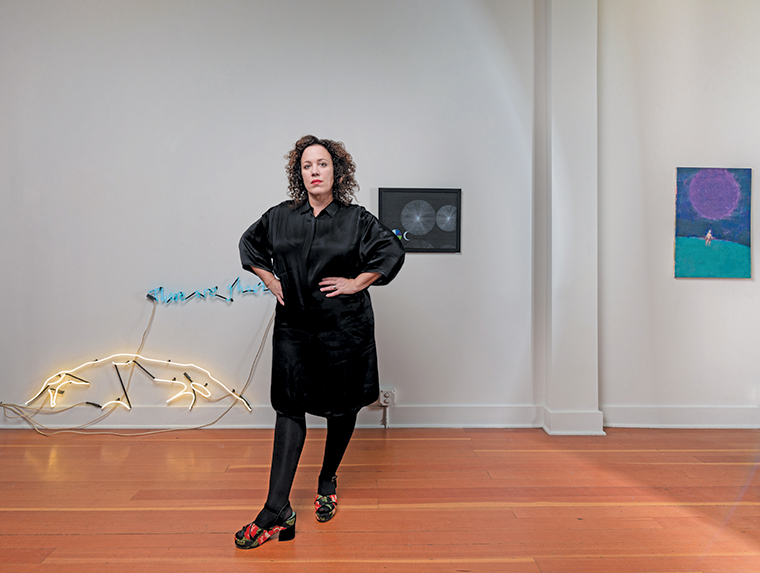

THE GREEN GALLERY, Milwaukee, Wisconsin Playing up the buzz of a hip LES gallery is a bit passé, unless of course you’re talking about the Lower East Side of Milwaukee, Wisconsin. Such is the case with The Green Gallery, the multi-venue platform run by Reena Spaulings Fine Art Director Jake Palmert, and local artist and curator John Riepenhoff, which began in the attic of Riepenhoff’s Riverwest apartment in 2004. Offering a platform for Midwestern artists (Evan Gruzis, Tyson and Scott Reeder, Michelle Grabner) and international artists (Trevor Shimizu, Shimon Minamikawa, Alex Becerra) the gallery is also the driving force behind the Milwaukee International Art Fair and Dark Fair, and a regular at NADA Miami Beach, London’s Sunday Art Fair, Dallas Art Fair, and L.A.’s Paramount Ranch. “If The Green Gallery was on the Lower East Side in New York, we couldn’t show anyone we like because they’d already be showing somewhere else. But there’s an exotic romanticism to Milwaukee so a lot of people are willing to come here and do a show,” says Riepenhoff, who does “a lot of stuff on the ground” in the region while constantly traveling, and is now involved in a new social-exchange, artist-run space called The Open, which just bowed this summer inside the Nicholas Frank Public Library. He’s also quite busy with his own art practice: this spring he’ll take part in the Whitney Biennial. “In the Midwestern art institutions, provincialism used to be a bad word because it was associated with an outdated model of what the potential of art could be, but I think with the Internet and some pioneers like The Suburban or Nicholas Frank’s Hermetic Gallery, we’re inventing a market in a way,” he says. “It’s kind of the Wild West.”
LIBRARY STREET COLLECTIVE, Detroit, Michigan After dissolving their partnership in Detroit’s Long-Sharp Curis Gallery five years ago, JJ and Anthony Curis decided to start Library Street Collective, focusing on work by contemporary artists who “have developed their skills and visual art in public spaces.” “There was so much graffiti and street art in the city at that time as it was falling into bankruptcy,” says director Sara Nickelson of the downtown gallery’s embrace of artists like Futura, Swoon and the Faile collaboration. “The gallery became this conceptual middle ground for the city and people, but it’s evolved with the artists as well.” In the “BELT,” an outdoor exhibition space curated by the gallery, murals have been commissioned from Nina Chanel Abney, Cleon Peterson and Shepard Fairey. “When we work with artists on shows, we usually look to do something in the city as well,” says Nickelson, noting they helped the Detroit Institute of Art acquire Swoon’s Thalassa and install a mural in the historic Jefferson-Chalmers district. They also assisted San Diego-based artist Kelsey Brookes, who will have a solo show with the gallery opening in April and has secured a commission for a 19-foot panel filled with hypnotic golden ratio sequences for the lobby of One Woodward Avenue. “They are helping to make art available to everyone in their community,” says Brookes. “And that is something to celebrate.”

ADAMS AND OLLMAN, Portland, Oregon When Amy Adams moved to Portland, Oregon nine years ago, she hatched an idea with her old boss, John Ollman, for whom she’d worked as a director of Philadelphia’s Fleisher/Ollman Gallery. “I realized I was working more with artists in the for-profit world because I didn’t have to worry so much about fundraising,” says Adams, who began working for Ollman after meeting him in 2008. “I joked that we’ll just start a satellite gallery.” That joke became a reality in March 2013, when they opened a project space in a 500-square-foot former clothing store in downtown Portland. A block from Powell’s Books and the Ace Hotel, the two curated an acclaimed solo show of archival work from the estate of the late, great Philly sculptor Bill Walton. Over the past four years, Adams and Ollman have followed up on that impressive salvo with a smart mix of exhibitions showcasing overlooked 20th-century American conceptualists (Ellen Cantor, Ellen Lesperance), autodidacts (James Castle, Vaginal Davis) and contemporary practitioners (Katherine Bradford, Jonathan Berger). “At first I thought this was just a project that would last a year,” says Adams, who is currently showing a suite of new paintings by Todd Norsten. “Now it’s really about love. It’s still a small, intimate program that’s really personal and I’m just enjoying the freedom this small space affords me.”











 in your life?
in your life?

